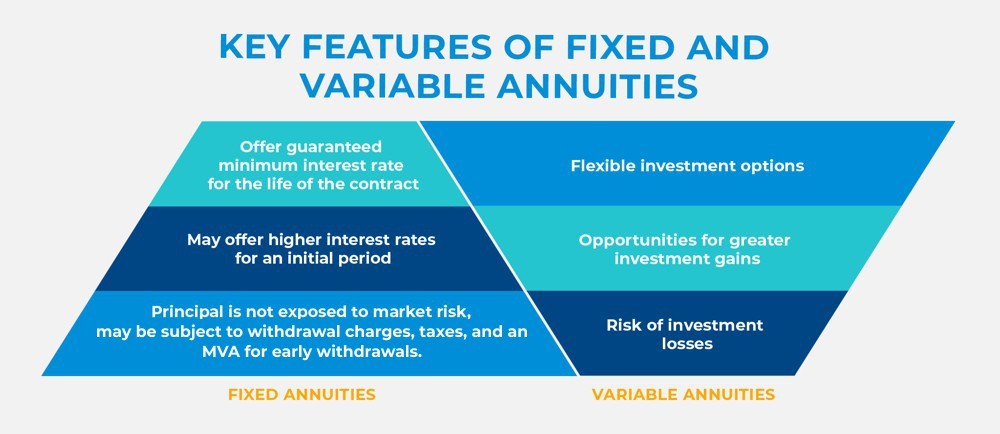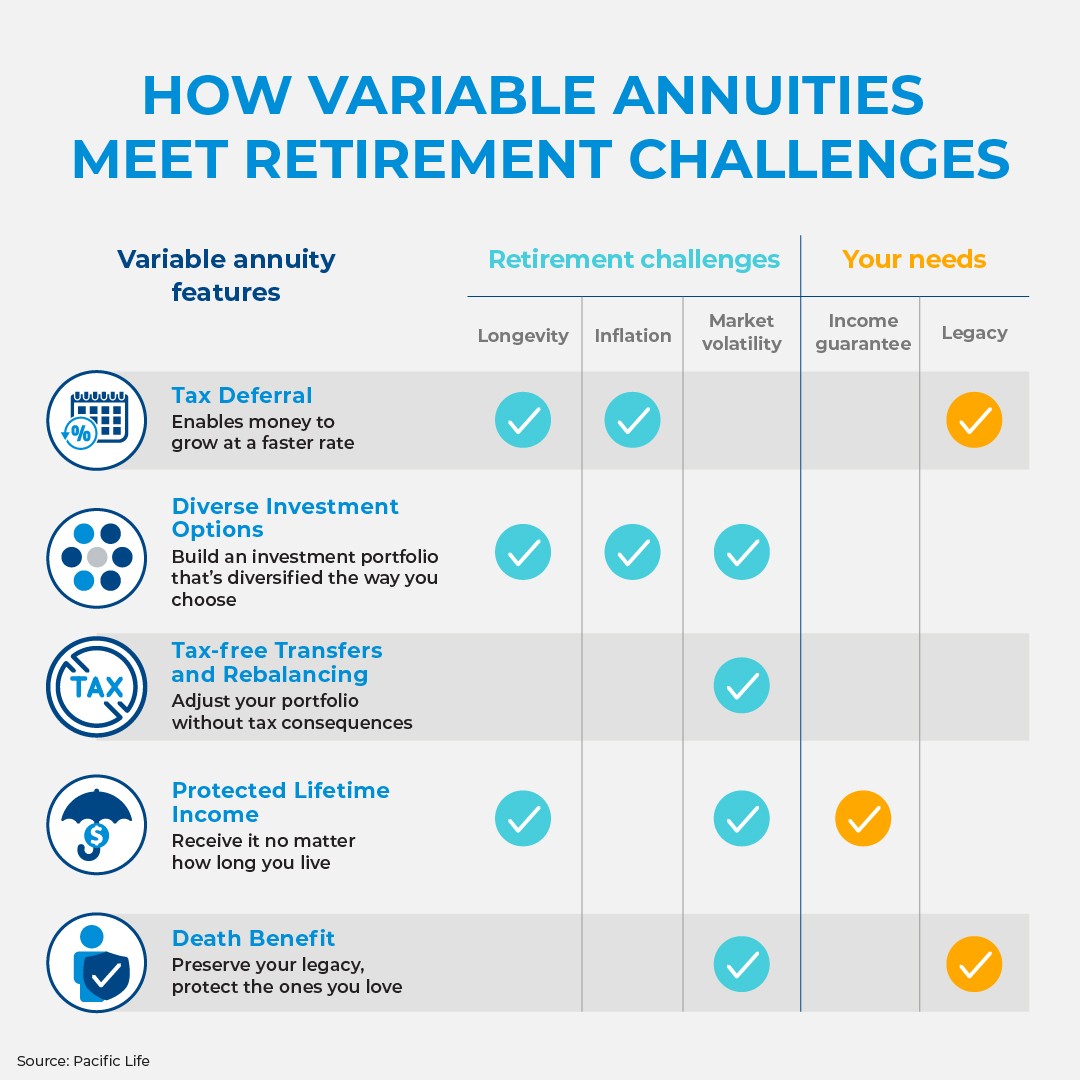Featured
Table of Contents
Equally as with a taken care of annuity, the proprietor of a variable annuity pays an insurer a swelling sum or series of settlements in exchange for the pledge of a series of future payments in return. As mentioned above, while a fixed annuity grows at an assured, continuous rate, a variable annuity expands at a variable rate that depends upon the performance of the underlying investments, called sub-accounts.

During the build-up phase, possessions invested in variable annuity sub-accounts grow on a tax-deferred basis and are strained only when the agreement owner takes out those revenues from the account. After the build-up phase comes the earnings stage. Gradually, variable annuity properties must in theory raise in value until the agreement owner chooses he or she wish to start taking out money from the account.
One of the most considerable problem that variable annuities normally present is high price. Variable annuities have several layers of fees and costs that can, in accumulation, create a drag of up to 3-4% of the contract's value yearly. Below are the most common fees associated with variable annuities. This expense makes up the insurance company for the risk that it presumes under the terms of the agreement.
Understanding Financial Strategies A Closer Look at How Retirement Planning Works Breaking Down the Basics of Investment Plans Benefits of Choosing the Right Financial Plan Why Choosing Between Fixed Annuity And Variable Annuity Matters for Retirement Planning Fixed Indexed Annuity Vs Market-variable Annuity: Simplified Key Differences Between Different Financial Strategies Understanding the Key Features of Long-Term Investments Who Should Consider What Is A Variable Annuity Vs A Fixed Annuity? Tips for Choosing Indexed Annuity Vs Fixed Annuity FAQs About Planning Your Financial Future Common Mistakes to Avoid When Choosing Fixed Vs Variable Annuity Financial Planning Simplified: Understanding Your Options A Beginner’s Guide to Tax Benefits Of Fixed Vs Variable Annuities A Closer Look at How to Build a Retirement Plan
M&E expense costs are determined as a portion of the agreement value Annuity providers hand down recordkeeping and various other administrative prices to the contract owner. This can be in the type of a flat yearly cost or a percentage of the contract worth. Management costs might be consisted of as part of the M&E danger cost or might be examined separately.
These costs can range from 0.1% for passive funds to 1.5% or more for proactively handled funds. Annuity agreements can be personalized in a number of ways to serve the certain requirements of the agreement proprietor. Some common variable annuity riders include ensured minimum accumulation advantage (GMAB), guaranteed minimum withdrawal advantage (GMWB), and guaranteed minimum revenue benefit (GMIB).

Variable annuity payments provide no such tax reduction. Variable annuities have a tendency to be extremely inefficient vehicles for passing wide range to the future generation because they do not take pleasure in a cost-basis adjustment when the original agreement owner dies. When the owner of a taxed financial investment account dies, the cost bases of the financial investments kept in the account are changed to reflect the market prices of those financial investments at the time of the owner's death.
Analyzing Strategic Retirement Planning A Comprehensive Guide to Fixed Indexed Annuity Vs Market-variable Annuity What Is the Best Retirement Option? Features of Smart Investment Choices Why Choosing the Right Financial Strategy Matters for Retirement Planning Immediate Fixed Annuity Vs Variable Annuity: A Complete Overview Key Differences Between Fixed Vs Variable Annuity Pros Cons Understanding the Key Features of Annuities Fixed Vs Variable Who Should Consider Retirement Income Fixed Vs Variable Annuity? Tips for Choosing Variable Annuity Vs Fixed Annuity FAQs About Planning Your Financial Future Common Mistakes to Avoid When Choosing a Financial Strategy Financial Planning Simplified: Understanding Your Options A Beginner’s Guide to What Is A Variable Annuity Vs A Fixed Annuity A Closer Look at Annuity Fixed Vs Variable
Consequently, heirs can inherit a taxed investment profile with a "clean slate" from a tax perspective. Such is not the instance with variable annuities. Investments held within a variable annuity do not receive a cost-basis adjustment when the original owner of the annuity dies. This means that any kind of built up latent gains will be handed down to the annuity owner's heirs, in addition to the linked tax obligation problem.
One substantial concern connected to variable annuities is the potential for problems of passion that may feed on the part of annuity salespeople. Unlike a financial advisor, that has a fiduciary obligation to make investment decisions that benefit the customer, an insurance policy broker has no such fiduciary obligation. Annuity sales are very profitable for the insurance coverage experts who offer them due to the fact that of high ahead of time sales commissions.

Several variable annuity contracts have language which places a cap on the percent of gain that can be experienced by certain sub-accounts. These caps avoid the annuity proprietor from fully joining a part of gains that could otherwise be appreciated in years in which markets create significant returns. From an outsider's perspective, it would seem that financiers are trading a cap on investment returns for the previously mentioned ensured flooring on investment returns.
As kept in mind above, surrender charges can seriously restrict an annuity proprietor's capacity to relocate assets out of an annuity in the early years of the contract. Additionally, while most variable annuities enable agreement owners to take out a defined amount during the build-up stage, withdrawals beyond this quantity commonly result in a company-imposed cost.
Withdrawals made from a fixed rate of interest investment alternative could also experience a "market price adjustment" or MVA. An MVA readjusts the worth of the withdrawal to reflect any kind of changes in rate of interest from the moment that the money was bought the fixed-rate alternative to the moment that it was taken out.

Quite commonly, even the salespeople that offer them do not fully recognize exactly how they work, and so salesmen occasionally exploit a purchaser's emotions to sell variable annuities rather than the qualities and viability of the products themselves. Our company believe that investors must totally understand what they have and just how much they are paying to possess it.
Analyzing Strategic Retirement Planning Key Insights on Your Financial Future Defining Fixed Annuity Vs Equity-linked Variable Annuity Benefits of Fixed Vs Variable Annuities Why Immediate Fixed Annuity Vs Variable Annuity Matters for Retirement Planning Deferred Annuity Vs Variable Annuity: Explained in Detail Key Differences Between Different Financial Strategies Understanding the Rewards of Indexed Annuity Vs Fixed Annuity Who Should Consider Strategic Financial Planning? Tips for Choosing Fixed Index Annuity Vs Variable Annuity FAQs About Planning Your Financial Future Common Mistakes to Avoid When Choosing Fixed Vs Variable Annuity Financial Planning Simplified: Understanding Your Options A Beginner’s Guide to Variable Vs Fixed Annuities A Closer Look at How to Build a Retirement Plan
The exact same can not be said for variable annuity possessions held in fixed-rate investments. These properties legitimately belong to the insurance provider and would certainly consequently go to risk if the company were to fall short. Likewise, any kind of assurances that the insurer has actually accepted offer, such as an ensured minimal income advantage, would certainly be in concern in the event of an organization failure.
Possible buyers of variable annuities must recognize and think about the monetary condition of the providing insurance policy firm before entering into an annuity contract. While the advantages and disadvantages of various types of annuities can be disputed, the real issue bordering annuities is that of viability.
As the stating goes: "Purchaser beware!" This post is prepared by Pekin Hardy Strauss, Inc. Fixed vs variable annuity comparison. ("Pekin Hardy," dba Pekin Hardy Strauss Wide Range Monitoring) for informative functions only and is not intended as a deal or solicitation for service. The info and information in this article does not constitute legal, tax obligation, accounting, financial investment, or other specialist recommendations
Table of Contents
Latest Posts
Highlighting the Key Features of Long-Term Investments Key Insights on Annuities Fixed Vs Variable Defining the Right Financial Strategy Benefits of Choosing the Right Financial Plan Why Choosing the
Understanding Deferred Annuity Vs Variable Annuity A Comprehensive Guide to Investment Choices Defining Fixed Vs Variable Annuity Pros And Cons Advantages and Disadvantages of Different Retirement Pla
Exploring the Basics of Retirement Options A Comprehensive Guide to Retirement Income Fixed Vs Variable Annuity What Is the Best Retirement Option? Features of What Is Variable Annuity Vs Fixed Annuit
More
Latest Posts